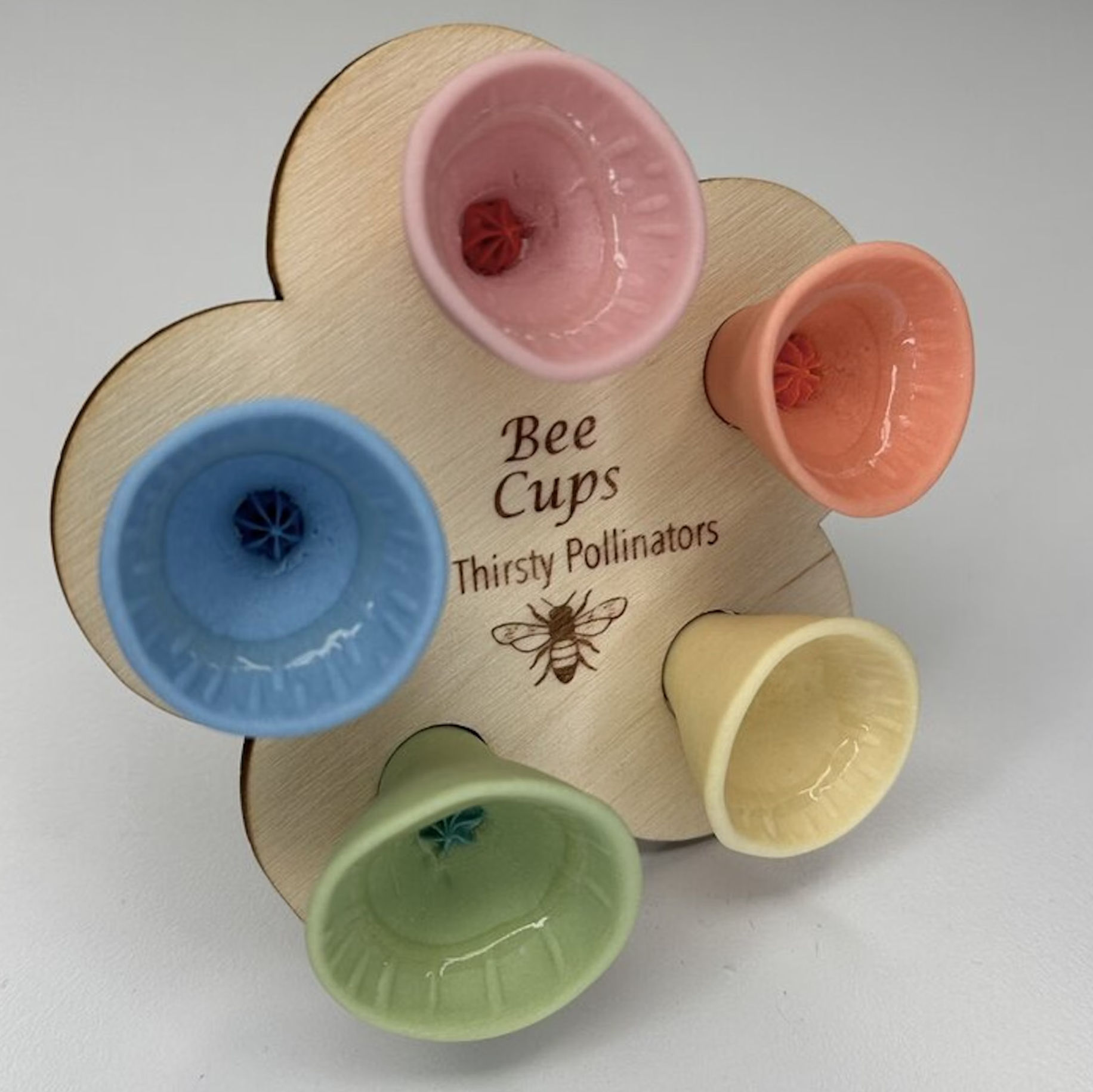How To Grow A Kansas Peony For Sublime Magenta Double Blooms And Enduring Fragrance
Growing Kansas peonies will add gorgeous color and fragrance to your garden. Their deep color and lush blooms are sure to make your neighbors jealous!
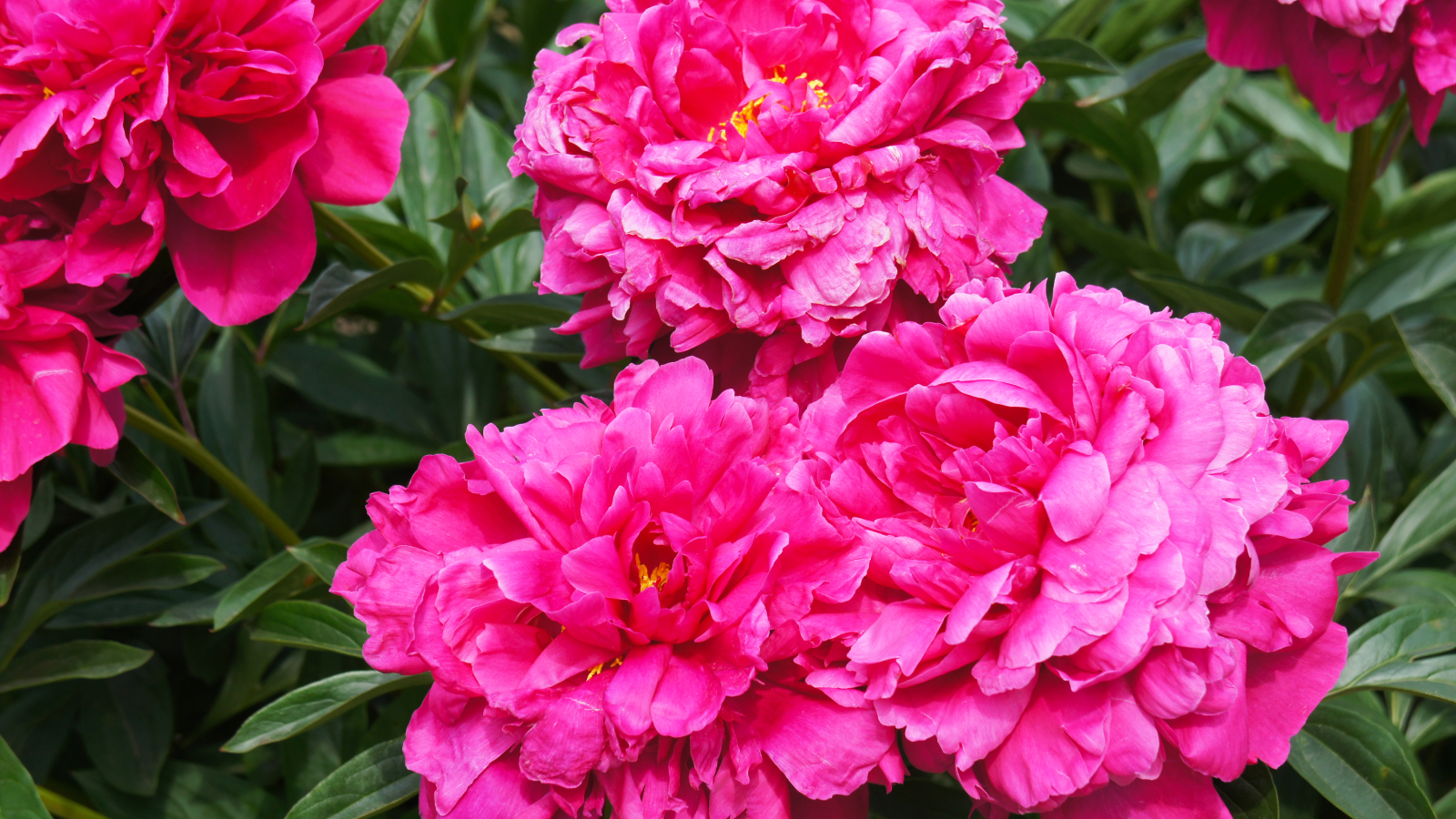

Laura Walters
Quick Facts
Botanical name: Paeonia lactiflora ‘Kansas’
Height: 30-36 in. (76-91 cm.)
Spread: 24-36 in. (61-91 cm.)
Sun exposure: Full sun, part shade
Soil requirements: Well draining
Hardiness zones: USDA zones 3-8
When to plant: Fall, spring
Flowering time: Early summer
Long-favored for their ease of growth, peonies make for a welcomed addition to most any landscape. Low-maintenance plants thrive for decades, requiring only very little care or attention from growers.
Especially vibrant types of peonies will have the greatest visual impact, offering gardeners dependable seasonal displays. ‘Kansas’ peonies are one such example of this, producing an abundance of striking double-pink blooms.
'Kansas' peonies are also known for their light, but romantic fragrance. Late May to early June will see these beauties bloom, and they make excellent cut flowers. The dark pink, frilly petals add interest to a bouquet or stand out on their own. Their light scent will create a lovely ambiance in any room in which they are displayed.
Caring For Kansas Peony
Let's explore the process of how to grow a ‘Kansas' peony plant in greater detail, putting emphasis on the cultivar's needs and its continued care.
Light
Those hoping to grow ‘Kansas’ peonies should situate the plant in full sun. Established plants will flourish where they are able to receive at least 6-8 hours of direct light each day. Though the bushes can be grown within a partly shaded bed, ample sun allows for the best bud set.
Temperature & Humidity
Peonies flourish when conditions are cool. Mild temperatures in early spring, between 60-70F (15-21C), aid in the growth of both flowers and foliage. Though the plants are able to withstand warmer temperatures, high heat and humidity through summer are likely to result in stress. Peonies will demonstrate an impressive tolerance to cold through winter, requiring a seasonal chill through its dormancy period.
Water
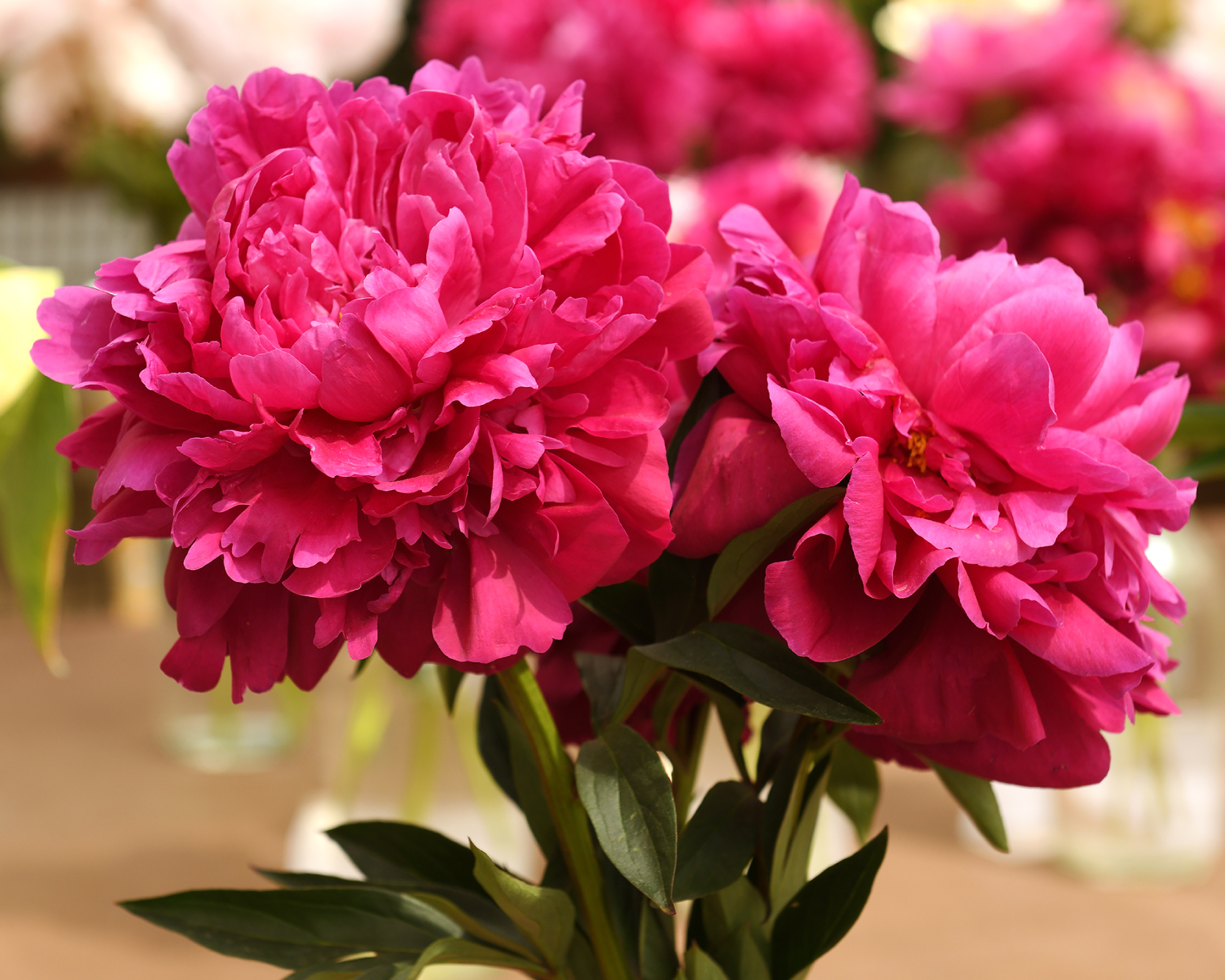
While established plants demonstrate some tolerance to drought, consistent moisture will aid in continued plant growth. Routine peony irrigation should occur through summer, at a rate of approximately 1 in. (2.5 cm.) per week. The use of proper technique, watering deeply and from below, further aids in the regulation of moisture levels within the soil.
Sign up for the Gardening Know How newsletter today and receive a free copy of our e-book "How to Grow Delicious Tomatoes".
Fertilizer
Though optional, routinely fertilizing peonies can help to promote growth and boost bloom. Experienced growers recommend the use of a well-balanced, slow-release fertilizer. Feeding best occurs on a regular basis, in both spring and fall. The early use of fertilizer should occur just before plants emerge from the soil and growth resumes. This allows for a stronger start to the summer season. Late feeding should occur after plants have been cut back to the ground, aiding in the continued development of a strong root system through fall.
Soil & Compost
Peonies are well adapted to a variety of soil types. Provided good drainage, most shrubs thrive across a range of pH and fertility levels. Still, the use of finished compost and other amendments at planting time can help to better establish new beds. Soil tests can be used to offer further insight into the specific needs of garden plants, helping growers to manage nutrients and overall soil structure.
Where To Grow A Kansas Double Peony
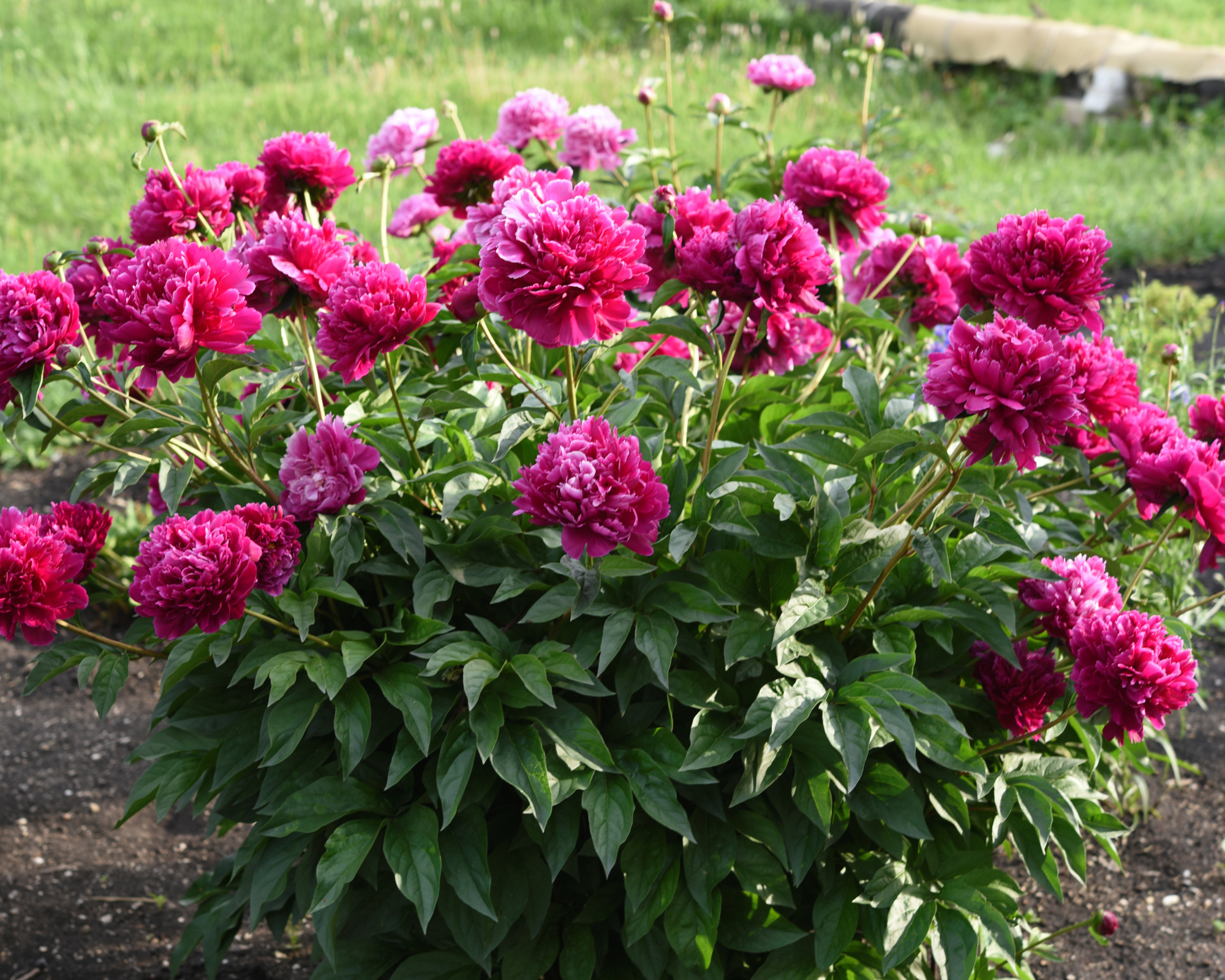
‘Kansas’ peonies grow best where they are able to receive bright sun throughout the day. This makes them ideal for use in mixed beds, borders, or in foundation plantings. Like most larger varieties, ‘Kansas’ may also be positioned into rows, as a means to create small hedges.
Though landscapers may be tempted to position the plant near large trees or structures, care should be taken to avoid shaded locations. Those with limited space may consider growing peony in containers, with gardeners making certain to opt for those large enough to support root growth.
How To Plant A Kansas Peony
‘Kansas’ red peony variety is quite popular, so bare roots are likely to be found for sale at most reputable garden centers. Though new plantings can be made in spring, experienced growers often prefer to plant in fall. This allows ample time for development after planting, helping to support strong growth in the first season.
Gardeners planting peony roots for the first time should prepare a hole approximately twice the width and depth of the plant. Each growth eye should be situated so that it rests no more than approximately 2 in. (5 cm.) below the surface of the soil. New plantings should be watered well, helping to settle the soil and encourage growth.
Pruning
Routine pruning of peonies is an essential aspect of their care. Upon bloom, faded or spent flowers can be removed from the plant as a means to prevent the production of seed. This will help to divert the plant's energy to other vital processes, encouraging overall vigor. Shrubs may also be trimmed in fall, after the first frost.
At this time, the plant's foliage starts to brown and die back to the ground. The removal of leaves and decaying plant matter helps to prepare peony beds for winter and reduce the occurrence of disease across plantings.
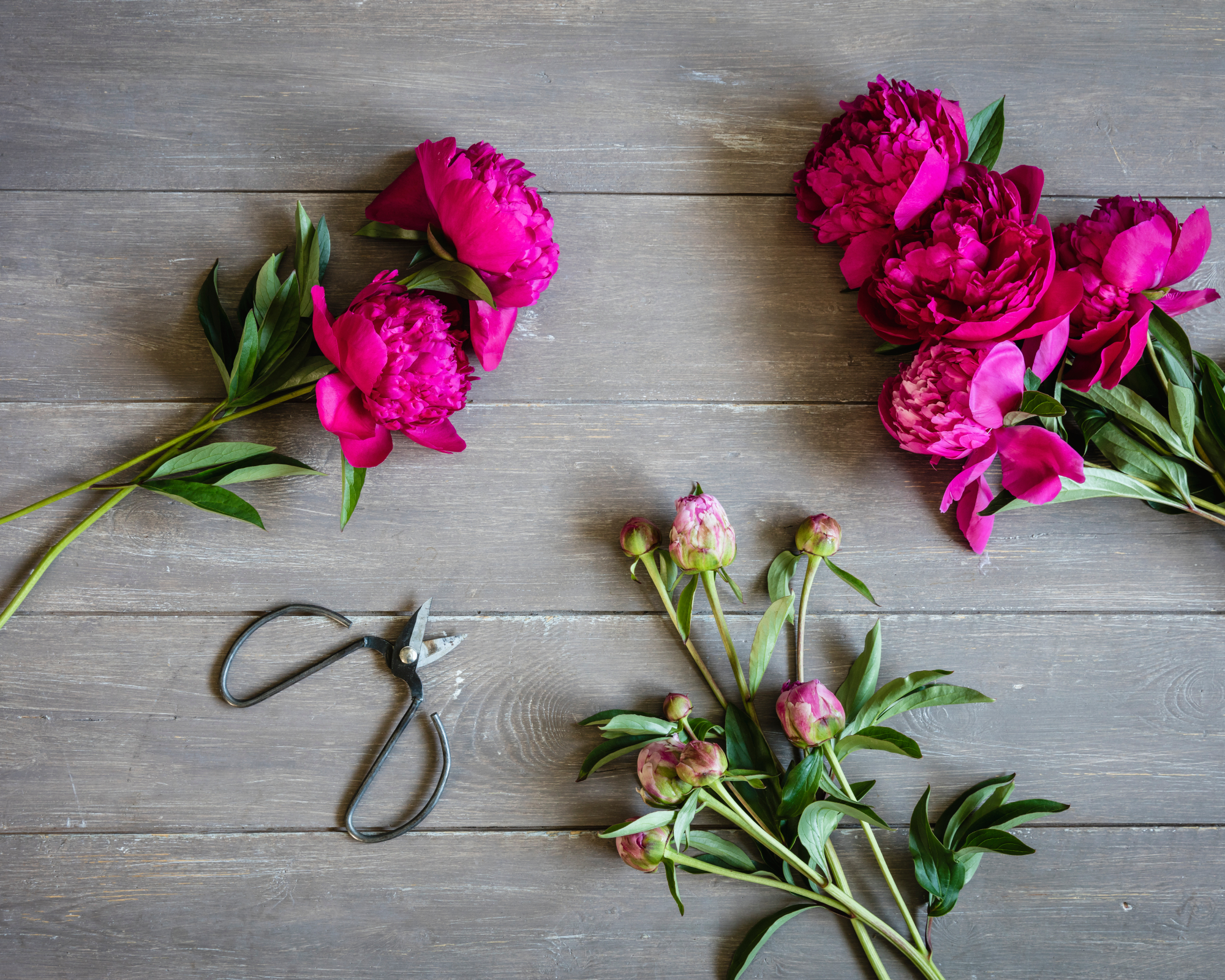
Problems, Pests & Diseases
While peonies only seldom succumb to foliar problems, plants can be affected by a number peony diseases. Fungal diseases like powdery mildew, peony botrytis blight, and leaf blotch, or 'peony measles,' are most common. Prevention and the early detection of such infections will be key to their treatment and control.
Pests may also be of cause for concern to peony growers. Aphids, mites, and mealybugs will be most likely to frequent the plant. Although finding ants on peonies' foliage and buds is common, they are not considered harmful.
Propagation
Peonies are most frequently propagated through division of peony plants. This occurs when plants are dormant. Each root is carefully lifted from the soil, then cut into smaller sections. Each segment should have multiple growth tips, or “eyes.” New divisions can be planted into the garden immediately, stored, or potted into individual containers.
Though it is possible to grow peonies from seed, the process requires a great deal of patience. It should also be noted that plants grown in this manner will not be true-to-type, differing from both parent plants.
Frequently Asked Questions
Are Kansas peonies better in pots or the ground?
Though experienced gardeners often prefer to situate peonies directly into prepared beds, it is possible to grow ‘Kansas’ peonies in containers. Those choosing to do so need to select pots carefully, allowing for ample room and adequate drainage. The use of a high-quality potting soil can further aid in plant growth, providing needed nutrients to support strong bloom.
Can you grow Kansas peonies year after year?
Like most, ‘Kansas’ peonies are extremely long-lived. It is not uncommon for shrubs to flourish for decades, returning seasonally for more than fifty years.
This article features products available from third-party vendors in the Gardening Know How Shop.
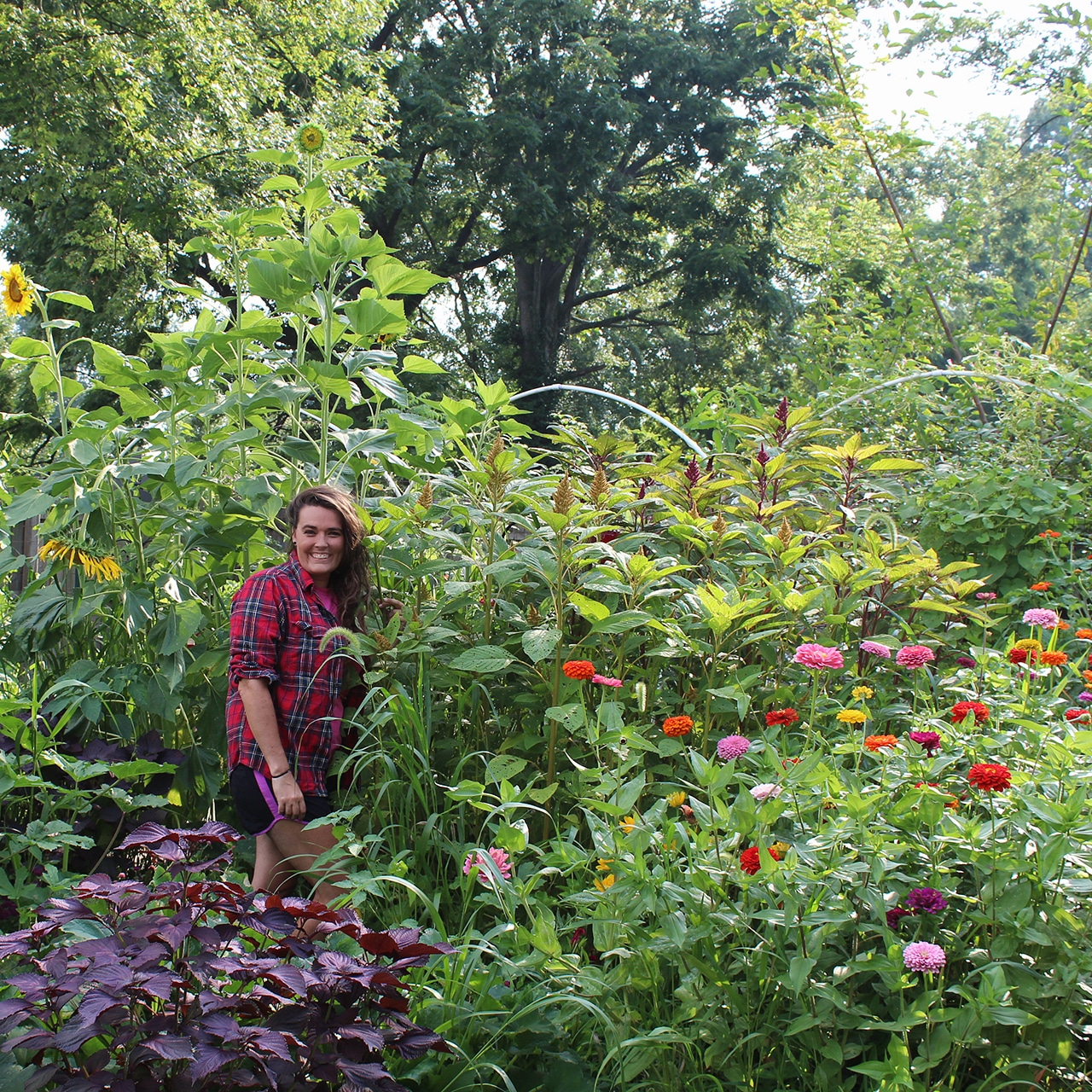
Tonya Barnett has been gardening for 13 years. Flowers are her passion. She has transformed her backyard into a cut flower garden, which she regularly chronicles on her YouTube channel http://www.youtube.com/@tonyawiththeflowers.
- Laura WaltersContent Editor

